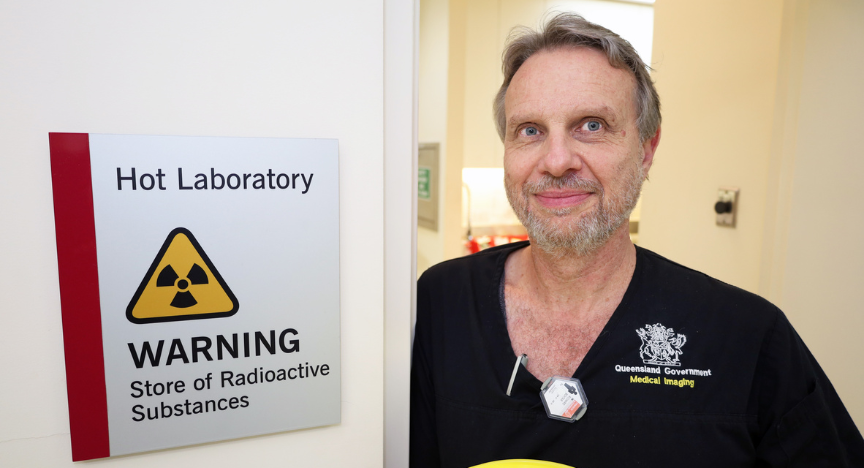
After 40 years at PA Hospital in the lead-lined environment of Radiology, Senior Nuclear Medicine Technologist Richard Boytar may know just a little too much about the inner workings of the hospital that has grown and changed around him in his work as a radiographer.
“We used to do x-rays in-house for the Boggo Road Prison. The process was to go past all the high security right into the middle of the prison - which was an experience in itself - then drive you back to PA. But of course, with two guards in the front, you would be ejected from the back of the paddy wagon right at the front door to the dismay of everyone,” he said.
Always one to find a humerus* tale, Richard agrees, “The facial expressions were great – It was funny, but it certainly wouldn’t happen today.”
Now based in PET and Nuclear Medicine, Richard’s career journey began from his own hospital experience as a youth coming in for one of three breaks on the same arm over many years.
It was in x-ray that he met a bloke called Peter Long (only recently retired) who was wearing motorbike boots and jeans with a long beard who talked to him about motorbikes.
This inspired young Richard who excelled at physics and went on fresh from high school to his first day at PAH on 6 January in 1984 to undertake a cadetship course involving six-month rotations between PA hospital and QUT to study radiography. The fully paid course was to attract the workforce following years of uncertainty about radiation following nuclear testing during WWII.
With two post grad diplomas under his belt, and two further fractures to that arm, Richard seems to have overcome the unknowns of radiography and flourished into the nuclear medicine technologist he is today.
“Treatments have changed significantly over that time,” Richard said. “With my first arm break, it was immobile in plaster for months – the last time, they put screws in it and instructed me to keep it moving.”
In reflecting on technological change over the many decades, Richard says the advent of digital imaging has greatly improved patient outcomes and quantitative analysis as well as the ability to find images in digital catalogues compared to the enormous file rooms of the past. The patient experience is also front of mind in modern radiography with reduced discomfort, improved accuracy and person-centred options such as interpreters for the diverse patient cohort of PAH.
Richard remembers fondly one of the surgeons and all-round gentleman of his early days was Dr Daryl Wall, who was exactly the same guy outside of work that he was inside.
“He remembers everyone and was always willing to connect with you. I was lying in G4 after one of my motorcycle accidents and Dr Wall was leading a contingent of doctors from Singapore around the hospital. There was nowhere to hide,” Richard said.
“Next thing, he had brought them all over to the bedside and declared ‘this is what the radiographers at this hospital have to do to get some time off!’ Ironically at the time it was true because most of us were working six or seven days a week due to a radiographer shortage in Qld.”
Radiography is not all black and white, but you can rely on Richard to know a great many of the stories from the grey area of decades gone by and where all the photos are of staff with their 80’s hair.
Congratulations on 40 years at PAH, Richard.